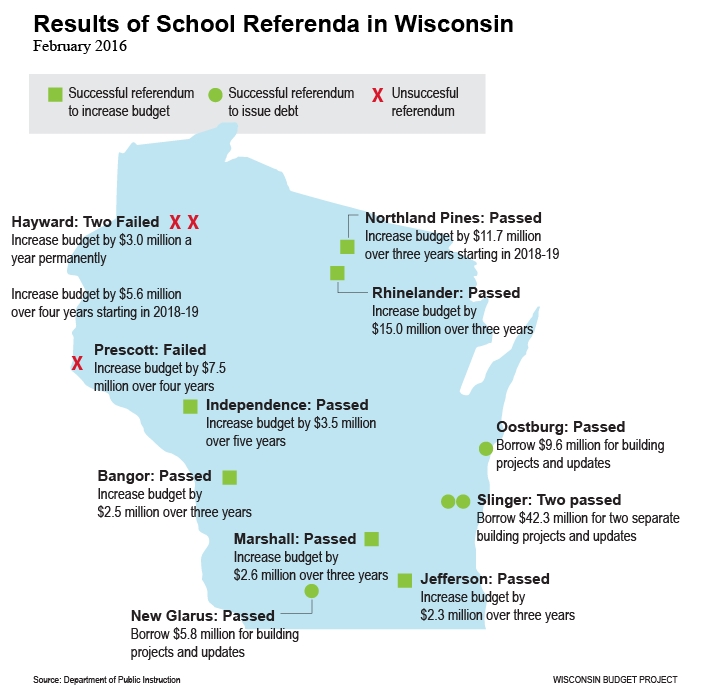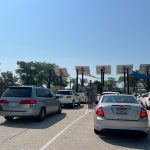9 Districts’ Voters Hiked School Taxes
9 of 11 districts in state with school spending referendums passed them in Tuesday election.
On Tuesday, Wisconsin voters approved initiatives in nine out of 11 school districts with referenda on the ballot, voluntarily raising property taxes in order to fund academics and other programs or improve infrastructure in their districts.
Measures approved by voters on Tuesday included:
- Approving $42.3 million in borrowing that will allow the Slinger School District to update technical education facilities, replace sections of roofs, improve electrical systems, add kindergarten classrooms, add an auditorium, and make other building improvements.
- Allowing the School District of Rhinelander to increase its budget by $15.0 million over the next three years. School officials said that without a successful referendum, class sizes would increase to at least 35 students per room, 45 staff members would have lost their jobs, and Advanced Placement classes and sports programs would have been cut.
- Allowing the School District of Jefferson to increase its budget by $2.3 million over three years. Without a successful referendum, school district officials said they would consider increasing class sizes, cutting elementary reading teachers, cutting a technology education teacher, and making other damaging budget cuts.
- Approving $5.8 million in borrowing in the New Glarus school district, in part to replace a leaky roof in the elementary school and HVAC equipment dating from the 1950s.
Voters also turned down referenda in two districts on Tuesday.
The total number of school referenda was 13. (Two districts had more than one referendum on the ballot.) Of the 13 referenda, 10 passed, for a 77% success rate. The Wisconsin Department of Public Instruction website has more information on school referenda.
Schools shouldn’t need to go to referendum to avoid making deep cuts to academic programs. Still, passing a referendum can be an important tool for taxpayers who want to ensure that their school district makes the kind of investments in students and schools that help build a strong economy.
This legislative session, some Wisconsin lawmakers sought to make it more difficult for voters to approve additional resources for children in public schools in their districts. They proposed requiring a two-year waiting period after an unsuccessful referendum before voters could get another chance to approve new resources. A later, amended version of the legislation shortened the waiting period to one year. As the state Assembly wraps up work this week, it looks like this bill (Assembly Bill 481/Senate Bill 355) won’t pass, meaning that residents can continue to use the referendum as a way to approve new resources for schools.






















Its always a waste of money when its other peoples children, but it comes to spending on their own kids, its suddenly an investment.
Excellent system that lets the local people decide. I’m glad the citizens voiced their opinions on how their tax money should be spent and if they’re ok with additional funds being used. (Also glad the restriction on 2 years between referendums did not pass)
The Hayward and Prescott school systems have been dealt a double whammy this week. Once at their own hand and the other by the state when it slashed Planned Parenthood funding. Those two districts are going to need the services of Planned Parenthood more than ever.